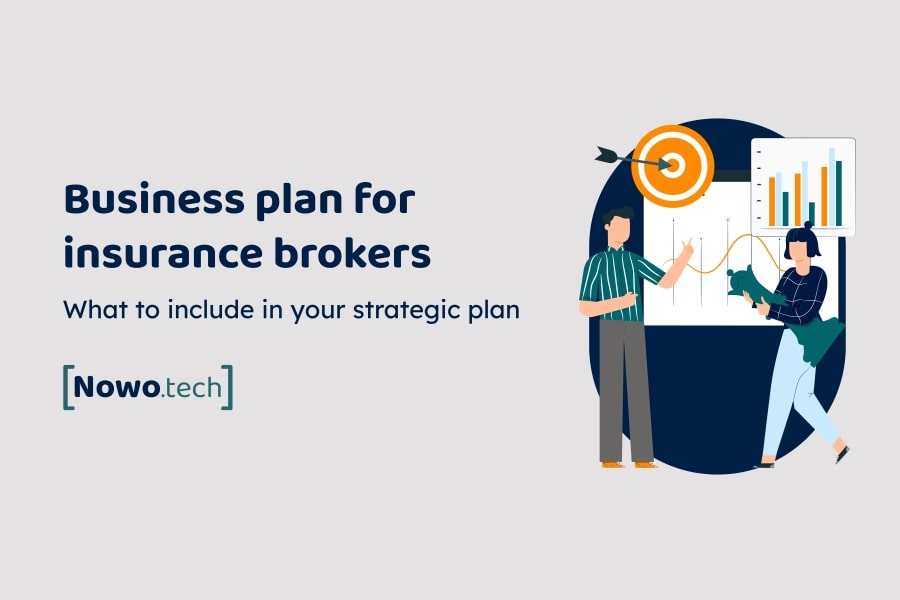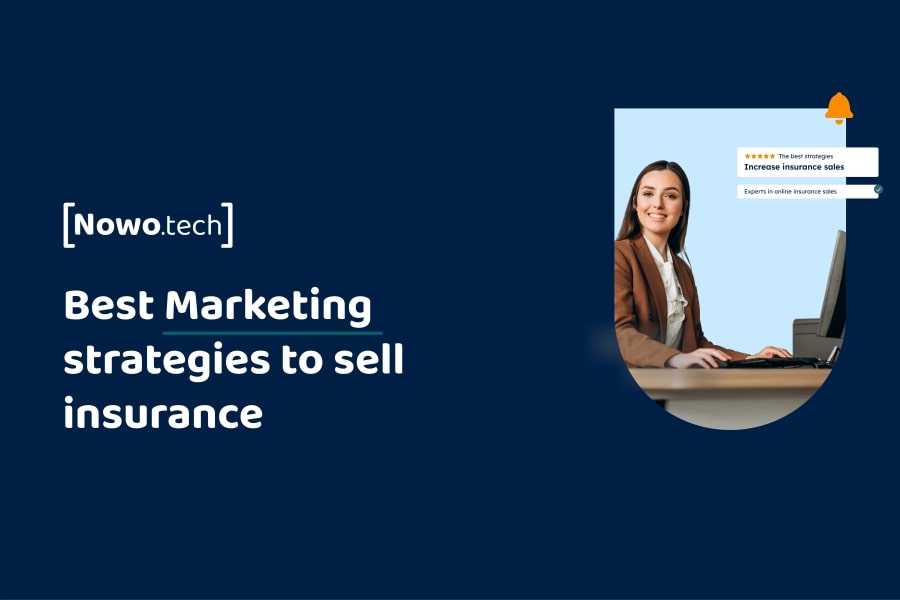Every day more and more companies decide to start devoting efforts to appear on social networks to offer insurance, with the aim of promoting themselves and having a new channel to attract customers.
However, trying to sell insurance through social networks without a strategic plan does not usually lead to success. It is essential to draw up a social media plan, either in a separate document or as one of the sections of the business plan.
The difficulty of selling insurance on social networks
The problem that happens to most insurance companies is that they use social networks solely for sales, without first providing educational or informative content that generates trust. The effect this has on potential customers is obvious: they run away.
In addition, social networks are often used without first stopping to think about whether the target audience is there, in what tone you should communicate with them, what post formats they might like best (photos, videos, infographics…). Before posting any publication, it is necessary to carry out a previous study, observing if 100% of your target is there or only a part of it, what frequency you think will be the most appropriate…
To these common mistakes we add the increased competitiveness in social networks, so that only companies that are doing well manage to increase their customer base.
Did you know that more and more, users consult on social networks what is said about the company before hiring? This reaffirms the importance of taking care of the content that is published, focusing it on the target audience.
Best social networks to sell insurance
To decide which are the best social networks for your business, you should first be clear about the most used ones. This will allow you to optimize your marketing strategies, in addition to establishing a communication channel for your insurance company.
Remember to choose the ones most used by your buyer persona and include them in your insurance marketing plan. This is the only way your strategy will be effective and you will not lose focus.
Nowadays, the platform has a large number of active users, something that indicates that it is still a very used network, where we could find our target audience. Although it seems to be a B2C social network, if it is correctly focused, it can be very profitable for B2B.
There are around 2.5 billion monthly users on Facebook. In addition, it allows to launch campaigns segmenting according to age, location, interests, behaviors…
Being a professional social network, it is ideal for businesses that target other companies or companies (B2B).
In the case of insurance sales, LinkedIn can be a very powerful tool if they are policies for companies and professionals.
The most widely used social network today. This makes it very useful especially for B2C businesses. Users use it in their free time, so they tend to show more interest in products and services that meet their personal, not professional, needs.
For this reason, if you are considering selling insurance on Instagram, you may want to focus on personal insurance (health, life, mobile, travel…).
Based mainly on the transmission of written information, this format may not suit every company. Even so, given that this social network is often used both personally and professionally, it can be a very interesting option.
It is also very useful for company communications.
TikTok
Although it is still too early to give fixed keys on how a company can increase its sales through TikTok, we can say that it is a social network where visual and humorous content is usually the most successful.
As of today, it is the platform that most viralizes content and companies are using it especially to humanize themselves, showing their employees, facilities…
Tips for selling insurance through social networks
One of the key objectives of any social media marketing strategy for selling insurance is to create meaningful and engaging connections with your audience. These connections are based on trust. But how can you get to the point where your business is able to inspire that trust?
Post new products and developments
Ideal for building customer loyalty through social media, keeping them up to date on what’s new with your company, new insurance… It will show that you are constantly progressing and developing, boosting trust and attracting new users similar to your target audience.
Try to engage your audience with your brand by launching contests, discounts or offers for those who interact with your publications.
Create valuable content
Content is the key to any strategy, but you must know your customer, understand how you can answer their questions, offer really interesting content and communicate in the right tone, so we must always have in mind innovative ideas to sell insurance, that would give us a competitive advantage.
How to register a claim, what to do if a certain claim occurs, what to take into account before taking out an insurance policy… Really useful content is more likely to go viral.
Show success stories
A very good strategy for attracting customers is to show, for example, the savings involved in taking out insurance with your company. This way, you will be perceived as the most profitable option. Once you have succeeded in attracting attention through this claim, highlight your other differential values (personalized attention, speed, professional team…). Savings attract attention and the guarantee builds loyalty.
Offer discounts and promotions
Related to the previous point, price is one of the most important factors. That is why you should make good use of promotions and offers, following some of these strategies:
- Discounts for a limited time: you will create a sense of urgency that will lead them to close the contracting of their policy with you.
- VIP offers for special clients: generating retention and loyalty.
- Discounts for complementary products: This is known as cross selling and would make your clients’ protection even more complete.
Use social media advertising
They offer a very precise segmentation capacity. If you know how to advertise insurance on social networks in the right way, you can get a very good return on investment.
Let’s define some relevant recommendations:
- Develop goals: the easiest thing will be for you to create goals in Google Analytics.
- Test different types of audiences. For example, try launching a mobile insurance campaign targeting 22 to 40 year olds and then another one targeting 30 to 45 year olds. Once both have concluded, compare the effectiveness of each and determine if it is useful or not, or if you should look for new audiences based on other criteria (location, gender, interests…).
- Allocate a budget to your campaign. Determine an initial advertising investment figure. When you have done several campaigns, calculate the profitability of them and see how you can further adjust the ROI.
- Install the tracking pixel as soon as possible. What can’t be measured can’t be improved, so if you haven’t already done so, install the Google Analytics tracking pixel today.
- Run A/B tests. They will be very helpful to determine what works best for you (some texts or others, graphic image or real photo, video…).
- Remarketing. Send advertising to people who have already visited your website and remind them that you offer the insurance they need.
Design your sales funnel
We call funnel or sales funnel the set of stages that a customer goes through from the moment he/she makes contact with the product or business (acquisition) until he/she makes a purchase.
As expected, this time we will focus the funnel to specific social media strategies for insurance.
First stage: Lead acquisition
You must get your customer to discover you and perform the first action. Some interesting actions could be that they visit your profile, save your publication, decide to follow you, comment on a post…
Second stage: Prospect
It is time to identify and/or classify the leads that you have managed to capture in the previous stage. With this, you will be able to create related strategies, saving time, effort and costs.
Among the actions you can take, our favorite is to create paid campaigns, either with your existing followers or with those who have visited or interacted with your profile. It can be very interesting to start trying to refer them to your website, so that they can see more in depth what you offer.
Third stage: Opportunity
This stage occurs when a sales opportunity appears. We can consider it an opportunity if the user quotes one of your insurances, calls you on the phone or writes to the email you have provided in your rrss asking about your products, or even if he decides to send you a direct message.
Keep in mind that not all customers have the same behavior, so you should be attentive to all channels.
Fourth stage: Qualification
It is time to learn as much as possible about the interests of each of your leads and determine how close they are to taking out insurance with you. To do this, you must be able to detect what attracts them most about the insurance, what disadvantages they find… This will allow you to determine which leads you should pay more attention to (those that are more likely to contract) and which leads you have to be more patient with and continue to nurture so that they can advance to the next stage.
Fifth stage: Closing
The last stage of the funnel is the one in which the lead has become a customer. Although it reaches the end of this funnel and we can consider it a success, it would be interesting to consider future cross-selling strategies to retain customers, being the ambassadors of our brand.
Share customer testimonials
As we have said before, many users research on social networks before contracting with a company, looking for what their customers think. Therefore, sharing your testimonials can help them know what to expect from you and if it is a good idea to choose your business.
We can also say that sharing customer testimonials on social networks always provides authority and credibility.
As you have already seen, selling insurance online through social networks can significantly increase your customer base; but only if you use them correctly and focus your objectives well, making good use of time and resources.









